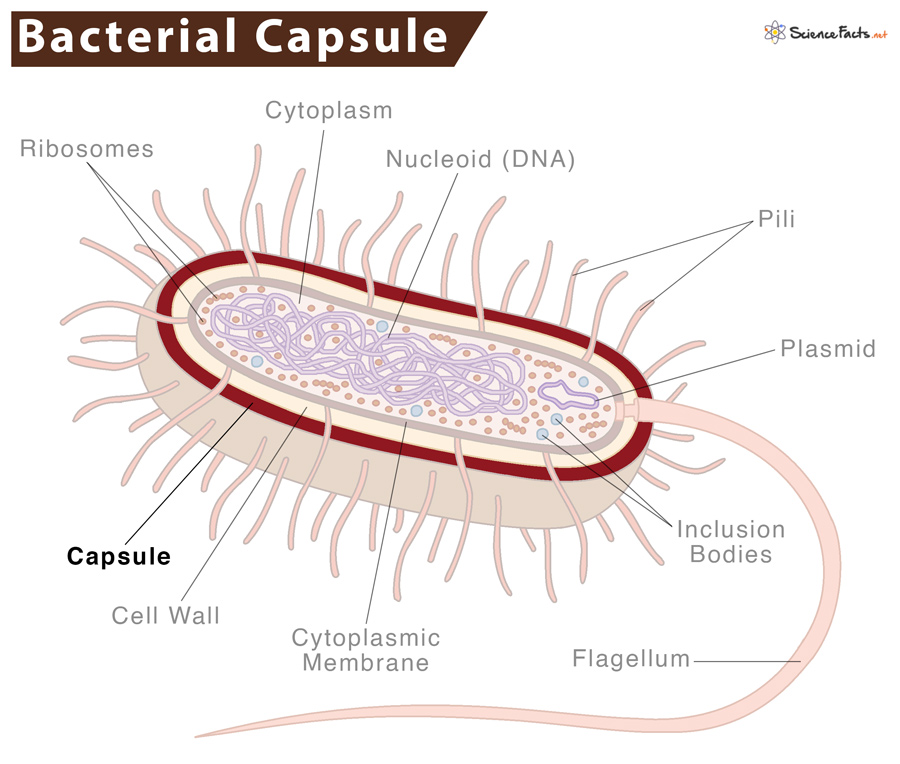They exist in both gram-positive and gram-negative bacteria. The capsule is immediately above the murein (peptidoglycan) layer of gram-positive bacteria such as Streptococcus pneumonia. In gram-negative bacteria such Haemophilus influenzae, Neisseria meningitidis, Klebsiella pneumoniae, and Escherichia coli, capsules are found above the outer membrane (lipopolysaccharide layer).
How are Bacterial Capsules Visualized
What Are They Made Of
Functions of Bacterial Capsule
The capsule appears like a mesh or network of fine strands under an electron microscope. When the thickness of the capsule is 0.2 µm or more, it is called a macro-capsule, and when it is less than 0.2 µm, it is a micro-capsule. Capsules composed of single kinds of sugars found in Streptococcus mutans are called homopolysaccharides. If two or more sugars of different types are present in a capsule, as found in Klebsiella pneumoniae, it is called heteropolysaccharides.
Other Roles
- Preventing Attachment: The capsule’s smooth nature and negative charge prevent the phagocyte from adhering to and engulfing the bacterial cells. Thus, they protect the cells from phagocytosis (anti-phagocytic) and destruction by the engulfing cells, the phagocyte.
- Saving Engulfed-Bacteria from Neutrophils: They prevent direct access of lysosomal contents within the cell by preventing phagocytosis and thus cell lysis.
- Preventing Cell-lysis by Complement Pathway: Capsule of gram-positive bacteria prevents interaction between complement proteins: C3b on the bacterial membrane, and CR1 on phagocytic cells, thus preventing cell lysis.
- Preventing Cell Desiccation and Drying: Capsule contains water in considerable amounts and thus prevents the cell from drying out.
- Growth and Multiplication: Capsules help bacteria adhere to host cells, which helps them to colonize by forming biofilms through multiplication.
- Protection: Capsule, being hard, protects the cell from physical damage and external injury.
- Source of Nutrients: Capsule supplies stored nutrition to the cell during low nutrient supply.
Clinical Significance
Bacterial capsules also serve some clinical significance.
- Bacterial Identification: Capsulated bacterial cells can be identified by using specific antiserum against capsular polysaccharides. It also identifies capsulated bacteria by their smooth bacterial colonies.
- Vaccine Development: Capsular polysaccharides of bacteria are used as antigens during the preparation of vaccines. Examples: Polyvalent (23 serotypes) polysaccharide vaccine of Streptococcus pneumoniae capsule and polyvalent (4 serotypes) vaccine of Neisseria meningitidis capsule.

